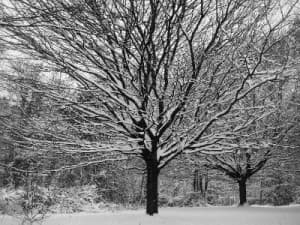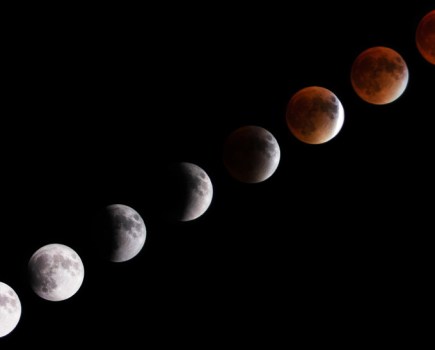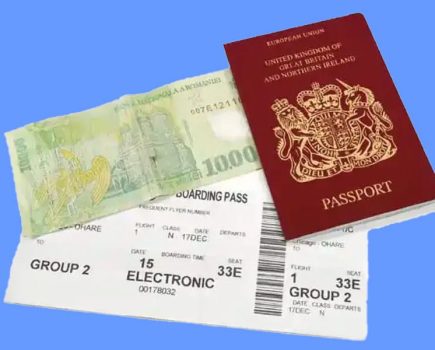How to photograph Christmas scenes such as snow, lights and family pictures this Christmas…
Christmas always comes with a number of pressures and uncertainties, and photographing Christmas scenes is no exception. Adverse weather conditions and a mixture of different lighting sources can fool a camera into recording a scene incorrectly, and sometimes you have to experiment a little to get the results you’re after.
So, whether you’re shooting Christmas lights, snowy scenes or simply the family this Christmas, here are a few tips to keep in mind when shooting Christmas scenes.
How to shoot Christmas scenes: Photographing Snow

Snowy scenes often present a problem for camera metering systems.
A camera judges its exposure by looking at at the details in the scene and choosing the right settings to record a balance between shadow, midtone and highlight details. When there are large, bright areas of snow, however, the camera senses this is the midtone and is easily led to underexpose.
There are a number of ways round this, the most suitable of which will depend on your subject.
One option is simply to use exposure compensation to boost exposure to the required level. Your historgram may also be useful, although for predominantly snowy scenes you can expect it to be weighted more towards the right hand side.
If you’re shooting a subject against a snowy background, try switching to a different metering mode such as centre-weighted or spot, as the camera will then know the subject which needs to be correctly exposed.
Some compacts also have specific scene modes for shooting snow, which may help if your camera has limited manual control.
Your camera is more likely to pick an accurate white balance than the correct exposure, but mistakes can happen here too. If this does give your camera’s auto white balance system some problems, find an unspoilt patch of snow as this can be used as a target for setting a custom white balance.
How to shoot Christmas scenes: Photographing Christmas Lights

Shooting Christmas scenes outside presents a range of issues, from keeping your gear safe in inclement weather to being stopped taking pictures in public places, particularly if you’re using a tripod.
Sometimes a tripod is necesary, especially if you plan on shooting Christmas lights. Although this scenario itself brings with it a different issue. If you shoot too early in the day the lights won’t be visible enough, while shooting too late means that only the lights are likely to be correctly exposed.
The key is to shoot as it’s getting dark, but when there is still a little ambient light available.
Not only will this help you balance your exposure a little better, but you may also end up with a more interesting contrast between a deep blue sky and the lights. Long exposures under such circumstances can also yield impressive results (particularly when there’s movement). However, be careful not to let your highlights blow when shooting for several seconds.
A lens hood is also handy for when the weather does suddenly turn. It will provide a little extra protection from snowflakes and rain falling onto the front element of your lens. If you do have any rain or snow falling on the front of your lens, make sure you have a lens cloth to hand to gently wipe it away.
There’s nothing worse than a great photo spoiled by a few drops of rain on the front of the lens. You may even need to use it for its inteded purpose, as you may be faced with the glare from bright lights outside of the scene you wish to photograph.
How to shoot Christmas scenes: Photographing Indoors

With the family all in one place there’s a good chance you’ll want to take a group shot or two of some Christmas scenes. All cameras have a self-timer facility which enable you to get into the frame yourself, but a tripod will help you set the camera up at the required level.
If you’re using a compact camera, you may find a small tripod alternative such as a Gorillapod to be a more convenient option.
If you’re using a larger camera such as a DSLR, you can find a similar support which will take up less space than a tripod and will be more convenient to place on tables. These include some of Gorillapod’s other models, as well as the Monsterpod and similar devices.
Group shots also require a reasonably wideangle lens, although the variety of subjects that you only find at Christmas mean that you may want to call upon a range of focal lengths and lenses. You could, for example switch to a mid-telephoto macro lens when shooting the details of Christmas tree decorations, or a wide-aperture prime lens to separate the excitment of a child from the rest of the party.
A superzoom lens to cover all focal lengths is ideal for convenience, but this has other drawbacks such as with maximum available apertures.
Remember to pay attention to your camera’s white balance. A grey card or another suitable target is helpful when dealing with awkward lighting sources. You may have the deal with a mixture of ambient light, candlelight, lights from televisions and LED lights on Christmas trees. These are likely to confuse your camera auto white balance system.
Taking a test shot of a suitable target will help you set the right balance. If you shoot Raw you can apply any corrections you make to a number of images at once. Alternatively, if you only happen to be shooting under one light source you may find more consistent results by switching your camera from its Auto setting to a preset.
And finally…
Always try to keep a camera to hand. While you may prefer to use a DSLR or hybrid camera for maximum control, sometimes they’re not practical to use, or you may not have one close to hand.
For more spontaneous Christmas scenes, such as when presents are being opened, or when the Christmas pudding is set alight (or for when anything goes wrong as it typically does at Christmas), consider carrying around a small compact. They may not capture an image to the quality of a DSLR, but they can be quickly powered up and can capture an image that you may otherwise miss.
Author: Matt Golowczynski






